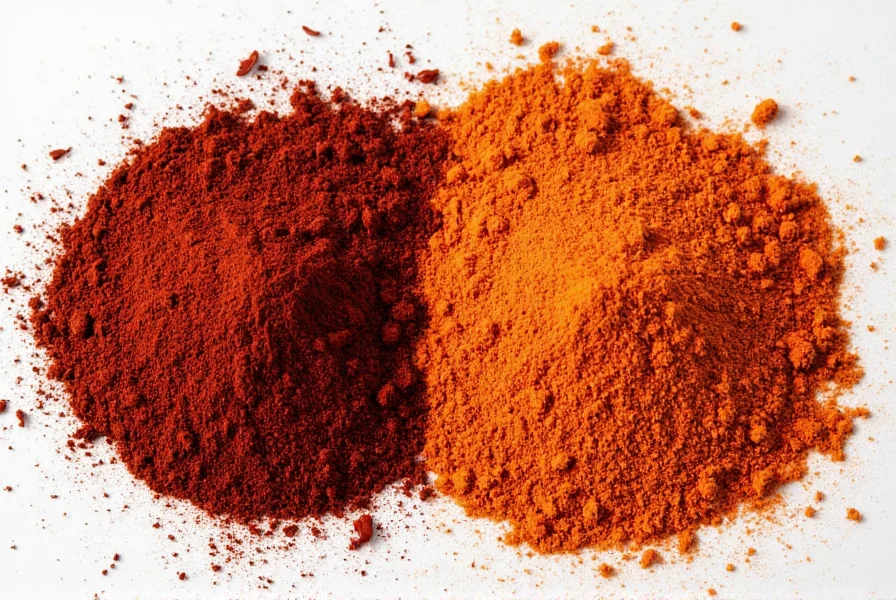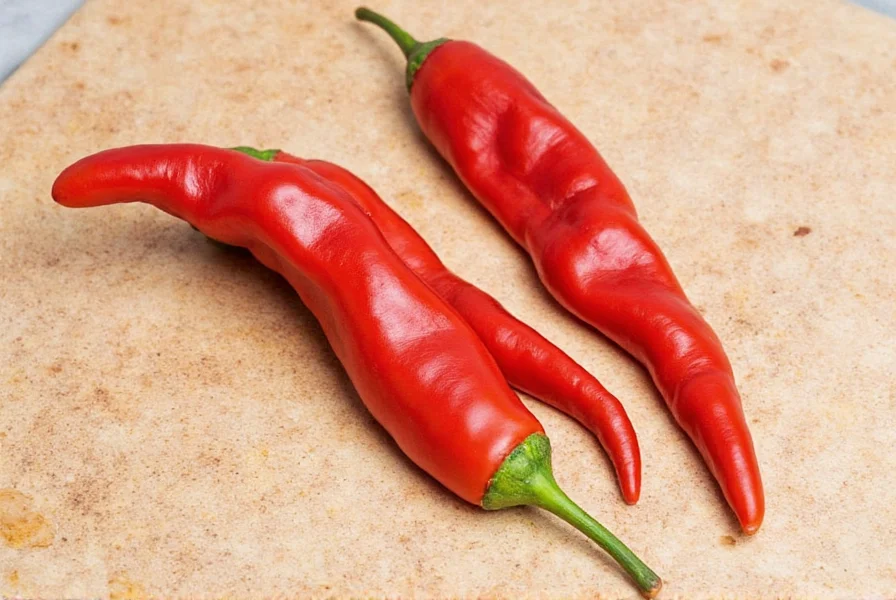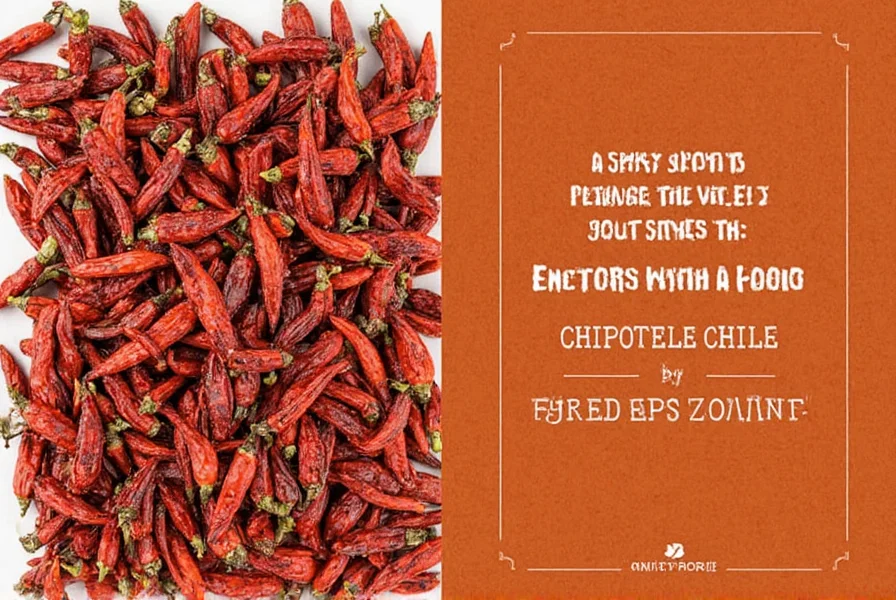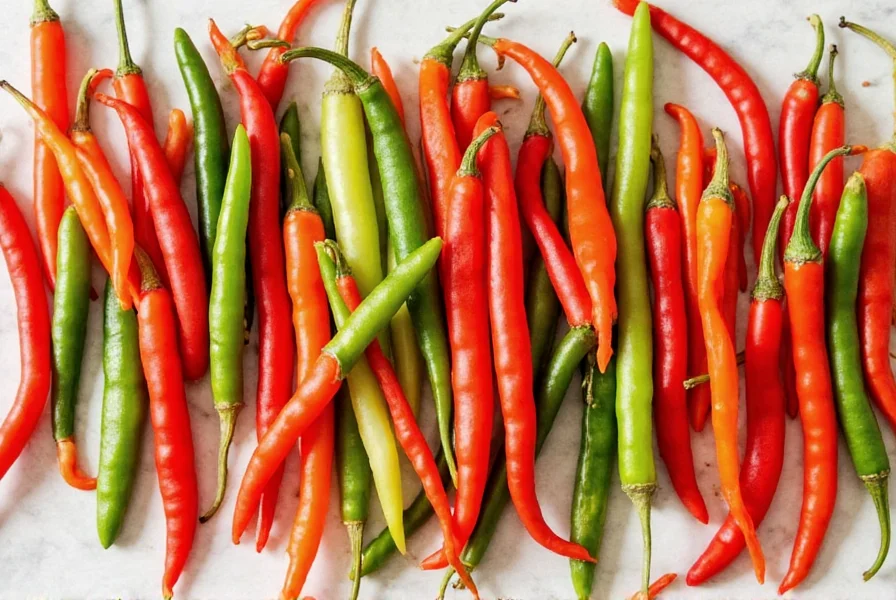| Chile Type | Heat Level (Scoville Units) | Flavor Profile | Common Uses |
|---|---|---|---|
| Ancho | 1,000–1,500 | Earthy, sweet, smoky | Mole sauce, stews, enchiladas |
| Guajillo | 2,500–5,000 | Tangy, slightly fruity | Salsa, adobo, tamales |
| Chipotle | 2,500–8,000 | Smoky, spicy, slightly sweet | Chipotle in adobo, BBQ sauces, soups |
| Habanero | 100,000–350,000 | Fiery, citrusy, floral | Habanero salsa, hot sauces, tropical dishes |
| Poblano | 1,000–1,500 | Earthiness, mild heat | Chiles rellenos, salsas, stuffed peppers |
A comprehensive dried chile chart comparing heat levels, flavor profiles, and common uses. This table provides a quick reference for selecting the right chile for your recipes.
- Soak before using: Most dried chiles need to be rehydrated before they can be used in recipes. Soak them in warm water for about 20–30 minutes until they become soft and pliable.
- Toast for extra flavor: Before soaking, you can lightly toast the chiles over medium heat to enhance their natural flavors. This is especially effective for smoky chiles like chipotle or pasilla.
- Use whole or ground: Depending on the recipe, you can use dried chiles whole or grind them into a powder. Whole chiles work well in stews and sauces, while ground chiles are perfect for spice blends and rubs.
- Store properly: Keep dried chiles in an airtight container away from moisture and light. When stored correctly, they can last up to a year without losing their potency.
- Experiment with combinations: Don't be afraid to mix different types of dried chiles to create unique flavor profiles. A blend of ancho and guajillo can give your salsa a nice balance of sweetness and heat.
Buying Guide: Choosing the Right Dried Chile
1. Ancho Chile
Features: Large, wrinkled, and dark red; mild to medium heat.
Advantages: Rich, sweet, and smoky flavor; ideal for creating complex sauces and stews.
Use Cases: Mole, enchilada sauce, chili, and roasted vegetable dishes.
Target Audience: Home cooks and professional chefs looking for a versatile, flavorful chile.
Suitable Occasions: Weeknight dinners, holiday meals, and casual gatherings.

2. Guajillo Chile
Features: Medium-sized, bright red, and slightly elongated; moderate heat.
Advantages: Tangy, slightly fruity, and easy to find in most grocery stores.
Use Cases: Salsa, adobo, and marinades; great for adding a bright, zesty flavor.
Target Audience: Beginners and experienced cooks who enjoy a balanced spice profile.
Suitable Occasions: Everyday meals, picnics, and casual lunches.

3. Chipotle Chile
Features: Smoked, dark red, and intensely flavored; medium to hot heat.
Advantages: Deep, smoky flavor with a lingering heat; adds a bold kick to any dish.
Use Cases: Chipotle in adobo, barbecue sauces, and hearty soups.
Target Audience: Fans of bold, smoky flavors and those who enjoy a little heat.
Suitable Occasions: Grilling events, family dinners, and weekend barbecues.

4. Habanero Chile
Features: Small, lantern-shaped, and bright orange; extremely hot.
Advantages: Intense heat with a sweet, citrusy undertone; perfect for those who crave extreme spice.
Use Cases: Hot sauces, salsas, and tropical-inspired dishes.
Target Audience: Spicy food lovers and adventurous eaters.
Suitable Occasions: Special occasions, themed dinners, and spicy food challenges.
5. Poblano Chile
Features: Large, green, and mild; becomes hotter when dried.
Advantages: Mild heat with a subtle, earthy flavor; great for beginners.
Use Cases: Stuffed peppers, salsas, and slow-cooked dishes.
Target Audience: Those who prefer milder flavors but still want a touch of heat.
Suitable Occasions: Family meals, weeknight dinners, and beginner-friendly recipes.
Frequently Asked Questions About Dried Chiles
What are the main differences between dried and fresh chiles?
Dried chiles have a more concentrated, complex flavor compared to fresh chiles, which have higher water content and a crisper texture. Drying intensifies the sweetness and develops deeper, earthier notes while reducing some of the grassy flavors found in fresh chiles. Dried chiles also tend to have a longer shelf life and are easier to store.
How long do dried chiles last?
When stored properly in an airtight container away from light and moisture, dried chiles can maintain their flavor and potency for 6-12 months. After this period, they won't necessarily spoil but will gradually lose their vibrant color, aroma, and heat. For best results, check your dried chiles periodically for any signs of mold or mustiness.
Can I substitute fresh chiles for dried chiles in recipes?
Yes, but with some adjustments. Generally, 1 dried chile can be substituted with 2-3 fresh chiles of the same variety. Keep in mind that dried chiles provide a more concentrated flavor, so you may need to adjust cooking times and liquid content in your recipe. For authentic flavor profiles (like in traditional Mexican mole), dried chiles are usually preferred.
How should I properly store dried chiles?
Store dried chiles in airtight containers or resealable bags in a cool, dark place. For extended shelf life, you can store them in the refrigerator or freezer. Avoid exposure to light, heat, and moisture, which can cause the chiles to lose flavor and potentially develop mold. Properly stored dried chiles can last up to a year while maintaining good flavor.
What's the best way to rehydrate dried chiles?
The most common method is to place dried chiles in a bowl and cover them with hot (not boiling) water. Let them soak for 20-30 minutes until they become soft and pliable. Some recipes call for toasting the chiles first in a dry skillet to enhance their flavor before soaking. After soaking, remove the stems, seeds, and inner membranes (unless you want extra heat), then puree or chop as needed for your recipe.
Are there health benefits to using dried chiles?
Yes, dried chiles contain capsaicin (which gives them heat) and are rich in vitamins A and C, as well as antioxidants. Capsaicin has been studied for potential benefits including pain relief, metabolism boost, and anti-inflammatory properties. The drying process concentrates these beneficial compounds, though the vitamin C content does decrease somewhat during the drying process.
Conclusion
Understanding the world of dried chiles is a journey worth taking. With the help of a dried chile chart, you can navigate the vast array of options and choose the perfect chile for your next recipe. From the rich, earthy notes of ancho to the fiery intensity of habanero, each chile has its own story and purpose.
Whether you're a passionate spice enthusiast or a curious home cook, experimenting with dried chiles can open up a whole new world of flavors. Use the practical tips and buying guide provided to make the most of your chile collection and bring a little extra heat—and heart—to your meals.











 浙公网安备
33010002000092号
浙公网安备
33010002000092号 浙B2-20120091-4
浙B2-20120091-4